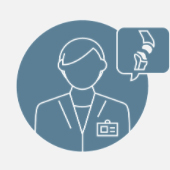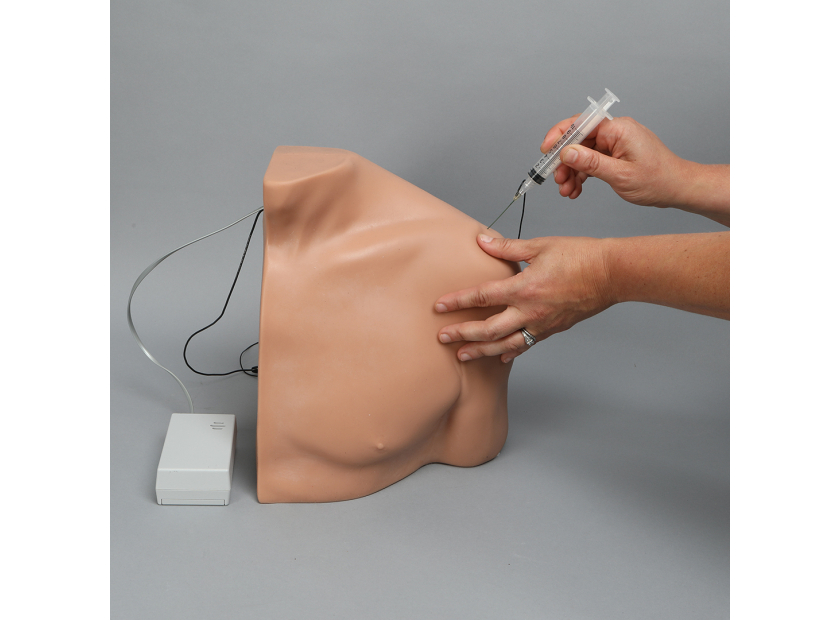5 Reasons an Injection Trainer Model Enables Specialized Medical Training Workshops
One of the trickiest parts of injection training is deciding whether or not to consolidate classes. There are many different injection types to consider, but a single unit for each one could waste valuable training time for students. Another option is to consolidate these pieces of training into a workshop. Such a strategy is supported through injection trainer models that provide a variety of benefits.
The Four Injection Types and Training
The four types of injections are based on the target area following needle insertion. As a result, each requires a different approach for ensuring accurate placement.
Type |
Description |
Method |
Intravenous |
Intravenous is the insertion of the needle in a vein. This allows the medicine to directly enter the bloodstream and speed the effects from absorption. It's the most common injection type, especially in emergency medicine for the delivery of antibiotics or pain medication |
Methods of intravenous injections can vary based on the vein visibility of the subject. Most commonly, they're given at 25-degrees or lower angles to ensure accurate placement while supporting deep enough entry. |
Intramuscular |
Shots directly into muscle take advantage of blood vessel absorption for slower entry into circulation. This type of shot is most commonly seen in vaccinations, where the goal is the creation of antibodies while minimizing the effect of the weakened virus on the body. |
Muscle is tough and difficult to push through. As a result, trainees are typically taught to use a 90-degree angle to deliver the injection. |
Intradermal |
Intradermal injections are the injections given closest to the surface of the skin, in the dermis. They're seen often in allergy or tuberculosis testing, though are rarely used for the delivery of medicine due to limited absorption into the circulatory system. |
The application of an intradermal injection requires an extremely delicate touch. The needle will be held near horizontal to the surface of the skin to minimize the risk of penetration beyond the dermis. |
Subcutaneous |
Subcutaneous injections go between the fat and the muscle of the patient. It's used for similar reasons to intramuscular injections, in that the goal is a slower absorption rate. It's common for vaccines as well as self-administered shots like insulin. |
Subcutaneous injections go in at a 45-to-90-degree angle to allow the leverage the individual needs to get through several layers. There's a bit more room for error in these injections, making them ideal for self-administered types. |
While there are other types of injections, these are the four most common that physicians and medical professionals will manage on a day-to-day basis. There's also another common procedure that bears mentioning, though it's not technically an injection as the objective is the removal of material.
The Fifth "Injection" Type: Needle Aspiration
Needle aspiration is a more advanced procedure, as there's no fixed angle for entry. The practitioner needs to consider the symptoms, goals, and conditions and then use their judgment to determine the best way to remove material. Fine needle aspiration may be used in the diagnosis of materials from a cyst. Core-needle options make use of wider devices for penetrating deeper and extracting tissue samples. These procedures will require extensive specialized training which may occur during the same learning unit as injections.
5 Reasons To Use an Injection Trainer Model in Workshops
Injection trainer workshops are a great opportunity to allow residents to explore all the different types of procedures and become comfortable performing them. Such training, when supported through surgical training models, provides a wide variety of benefits.
1. Access
Injection trainer models increase access to medical education, as they're affordable and relatively easy to source. Using a variety in a classroom environment ensures everyone gets hands-on training across all injection types and procedures.
2. Variety
A good medical model provider will offer a variety of options, from basic training modules to complex, realistic devices. Through this variety, educators can consolidate all their injection training to a single workshop.
3. Scalable training
One major benefit of using a variety of anatomy models is establishing a scalable training program. Trainees begin on simpler, less sophisticated models and then slowly move up to more complex options. This limits the risk of model damage through inexperience while also advancing skills.
4. Realism
Injections are something that residents have to learn by feel. It takes a lot of experience to understand the right pressure to use at various angles across the different injection types. Models can provide the realism they need to practice this. At the same time, features like haptic feedback can help guide them to better positioning and enhance their results.
5. Student control
Medical models used in a workshop environment give students a bit more independence in self-directing their training. The instructor can set up stations and allow them to move freely between them as they increase their comfort level with various injection types.
Ensuring Highest Quality Training with the Best Models
An injection trainer model, used in conjunction with a workshop environment, is a good way to consolidate all the different types of injection training. This is a procedure residents will have to practice hundreds of times. Medical education models facilitate this and give them room to grow from their mistakes, ultimately ensuring better patient outcomes down the road.
Sawbones provides a variety of injection trainer model options to support all levels of medical education. For more information on our offerings or to talk about custom training models, contact us at 206-463-5551.

If you're seeking something you can't find on our website, our sales team is happy to help. We can either direct you to the right model or provide a free quote on the right custom project to meet your needs. Discover options with our clear bone models, laminated blocks, custom displays, or other machining projects.








